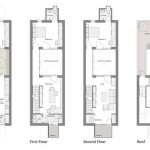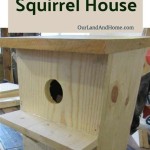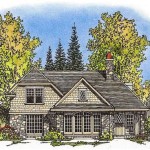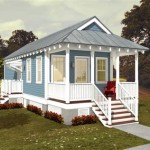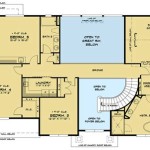Screech Owl House Plans refer to blueprints or instructions that guide the construction of purpose-built enclosures specifically designed to provide shelter and a nesting site for Eastern or Western Screech Owls. These plans outline the materials, dimensions, and construction techniques required to create a suitable artificial home for these small nocturnal owls.
Screech Owl House Plans are invaluable tools for conservationists, wildlife enthusiasts, and homeowners who wish to attract these beneficial birds to their properties. By providing a safe and secure nesting space, these plans help support screech owl populations, which play a significant role in controlling rodent populations and maintaining ecological balance.
In the following sections, we will delve into the specific details of Screech Owl House Plans, including their design features, construction requirements, and tips for successful installation and monitoring.
When crafting Screech Owl House Plans, several key points should be considered:
- Appropriate Dimensions
- Correct Entrance Hole
- Predator Protection
- Ventilation and Drainage
- Durable Construction
- Naturalistic Appearance
- Easy Monitoring
- Responsible Placement
Adhering to these considerations will ensure the creation of a suitable and effective nesting site for Eastern or Western Screech Owls.
Appropriate Dimensions
The dimensions of a Screech Owl House are crucial to ensure the comfort and safety of its feathered inhabitants. The internal space should be large enough to accommodate the owl and its young, but not so large as to make it difficult for the owl to maintain a comfortable temperature. The entrance hole should be the correct size to allow the owl easy access while preventing larger predators from entering.
- Height: The height of the house should be between 12 and 15 inches (30 to 38 centimeters). This provides ample space for the owl to stand upright and move around comfortably.
- Width: The width of the house should be between 8 and 10 inches (20 to 25 centimeters). This allows the owl to turn around easily and provides enough space for a small nest.
- Depth: The depth of the house should be between 6 and 8 inches (15 to 20 centimeters). This provides enough space for the owl to incubate its eggs and brood its young.
- Entrance Hole: The entrance hole should be 3 inches (7.6 centimeters) in diameter. This is large enough to allow the owl easy access, but small enough to prevent larger predators, such as raccoons, from entering.
It is important to note that these dimensions are general guidelines and may vary slightly depending on the species of screech owl that you are targeting. For example, Eastern Screech Owls are slightly larger than Western Screech Owls, so their houses may need to be slightly larger as well.
Correct Entrance Hole
The entrance hole of a Screech Owl House is a critical design feature that must be carefully considered. It should be large enough to allow the owl easy access to its nest, but small enough to prevent larger predators, such as raccoons, from entering.
- Size: The entrance hole should be 3 inches (7.6 centimeters) in diameter. This is large enough to allow the owl to easily enter and exit the house, but small enough to deter predators.
- Shape: The entrance hole should be round. This shape is less likely to attract predators than a square or rectangular hole.
- Placement: The entrance hole should be placed near the top of the house, at least 6 inches (15 centimeters) from the bottom. This placement makes it more difficult for predators to reach the nest.
- Lip: The entrance hole should have a slight lip around the edge. This lip helps to prevent predators from enlarging the hole.
By following these guidelines, you can ensure that the entrance hole of your Screech Owl House is both accessible to the owl and secure from predators.
Predator Protection
Protecting screech owls from predators is a key consideration when designing and placing Screech Owl Houses. Screech owls are vulnerable to a variety of predators, including raccoons, opossums, snakes, and cats. By taking steps to predator-proof your Screech Owl House, you can help to ensure the safety of its feathered inhabitants.
- Sturdy Construction: The house should be made of durable materials, such as wood or PVC, that can withstand the attacks of predators. The walls of the house should be at least 1/2 inch (1.3 centimeters) thick.
- Metal Baffle: A metal baffle can be placed around the entrance hole to prevent predators from reaching inside the house. The baffle should be at least 6 inches (15 centimeters) wide and extend at least 2 inches (5 centimeters) beyond the entrance hole.
- Placement: The house should be placed in a location that is not easily accessible to predators. Avoid placing the house near trees or other structures that predators can use to climb up to the house.
- Regular Monitoring: Regularly inspect the house for signs of damage or predators. If you find any damage, repair it immediately. If you see any predators near the house, take steps to deter them, such as making noise or spraying them with water.
By following these tips, you can help to protect your screech owls from predators and ensure their safety.
Ventilation and Drainage
Proper ventilation and drainage are essential for the health and well-being of screech owls. A well-ventilated house will help to prevent the buildup of moisture and mold, which can cause respiratory problems for the owls. Good drainage will help to prevent the house from flooding during heavy rains, which can lead to hypothermia and other health problems for the owls.
- Ventilation Holes: Ventilation holes should be placed near the top of the house, on opposite sides of the house. The holes should be at least 1 inch (2.5 centimeters) in diameter and should be covered with a wire mesh to prevent predators from entering.
- Drainage Holes: Drainage holes should be placed in the bottom of the house. The holes should be at least 1/2 inch (1.3 centimeters) in diameter and should be covered with a wire mesh to prevent predators from entering.
- Sloped Roof: The roof of the house should be sloped to allow water to drain off easily. The slope should be at least 30 degrees.
- Avoid Overcrowding: Overcrowding can lead to a buildup of moisture and mold. Avoid placing more than one owl family in a single house.
By following these tips, you can help to ensure that your Screech Owl House is well-ventilated and well-drained, providing a healthy and comfortable home for your feathered friends.
Durable Construction
Screech Owl Houses should be built to withstand the elements and last for many years. This means using durable materials and construction techniques that can withstand extreme weather conditions, such as high winds, rain, and snow.
- Materials: The house should be made of durable materials, such as wood or PVC, that can withstand the elements. The walls of the house should be at least 1/2 inch (1.3 centimeters) thick.
- Construction: The house should be constructed using sturdy joinery techniques, such as screws or bolts. The roof should be sloped to allow water to drain off easily.
- Hardware: All hardware, such as hinges and latches, should be made of rust-resistant materials, such as stainless steel or galvanized steel.
- Finish: The house should be finished with a weather-resistant paint or stain to protect it from the elements.
By following these tips, you can help to ensure that your Screech Owl House is durable and will provide a safe and comfortable home for your feathered friends for many years to come.
Naturalistic Appearance
Screech Owl Houses should have a naturalistic appearance to help them blend in with their surroundings and make the owls feel more comfortable. This can be achieved by using natural materials, such as wood or bark, and by avoiding bright colors or shiny surfaces.
- Natural Materials: The house should be made of natural materials, such as wood or bark. These materials will help the house to blend in with its surroundings and make the owls feel more at home.
- Earthy Colors: The house should be painted or stained in an earthy color, such as brown or green. This will help the house to blend in with its surroundings and make it less noticeable to predators.
- Avoid Shiny Surfaces: The house should not have any shiny surfaces, as these can attract predators. Instead, use dull or matte finishes.
- Add Natural Elements: You can add natural elements to the house, such as branches or leaves, to make it more attractive to owls. However, be sure to avoid using anything that could be harmful to the owls, such as sharp objects or poisonous plants.
By following these tips, you can help to ensure that your Screech Owl House has a naturalistic appearance that will make the owls feel comfortable and safe.
Easy Monitoring
Easy monitoring is an important consideration when designing and placing Screech Owl Houses. Being able to easily monitor the house will allow you to check on the owls and their young, and to make sure that the house is in good condition.
- Access Door: An access door should be installed on the side of the house. The door should be large enough to allow you to easily inspect the inside of the house, but small enough to prevent the owls from escaping.
- Perches: Perches should be placed inside the house, near the entrance hole. The perches will give the owls a place to rest and will make it easier for you to observe them.
- Camera Hole: A camera hole can be drilled in the side of the house, near the top. The camera hole should be large enough to allow you to insert a camera lens, but small enough to prevent the owls from escaping.
- Placement: The house should be placed in a location that is easy for you to access. Avoid placing the house in a remote location or in an area with dense vegetation.
By following these tips, you can help to ensure that your Screech Owl House is easy to monitor, allowing you to keep an eye on the owls and their young.
Responsible Placement
Responsible placement is crucial for the success of your Screech Owl House. The location of the house should meet the needs of the owls while minimizing the risks to their safety and well-being.
Habitat Requirements: Screech owls prefer to nest in cavities in trees, so the house should be placed in an area with mature trees. The house should be placed at least 10 feet (3 meters) above the ground, and it should be facing away from the prevailing wind.
Proximity to Water: Screech owls need access to water for drinking and bathing. The house should be placed within 1/4 mile (400 meters) of a water source, such as a pond, stream, or river.
Avoid Predators: Screech owls are vulnerable to predation from a variety of animals, including raccoons, opossums, snakes, and cats. The house should be placed in a location that is not easily accessible to these predators. Avoid placing the house near trees or other structures that predators can use to climb up to the house.
Minimize Disturbance: Screech owls are sensitive to disturbance, so the house should be placed in a location that is not subject to a lot of human activity. Avoid placing the house near roads, trails, or other areas where people are likely to be present.
By following these guidelines, you can help to ensure that your Screech Owl House is placed in a responsible location that meets the needs of the owls and minimizes the risks to their safety and well-being.










Related Posts

